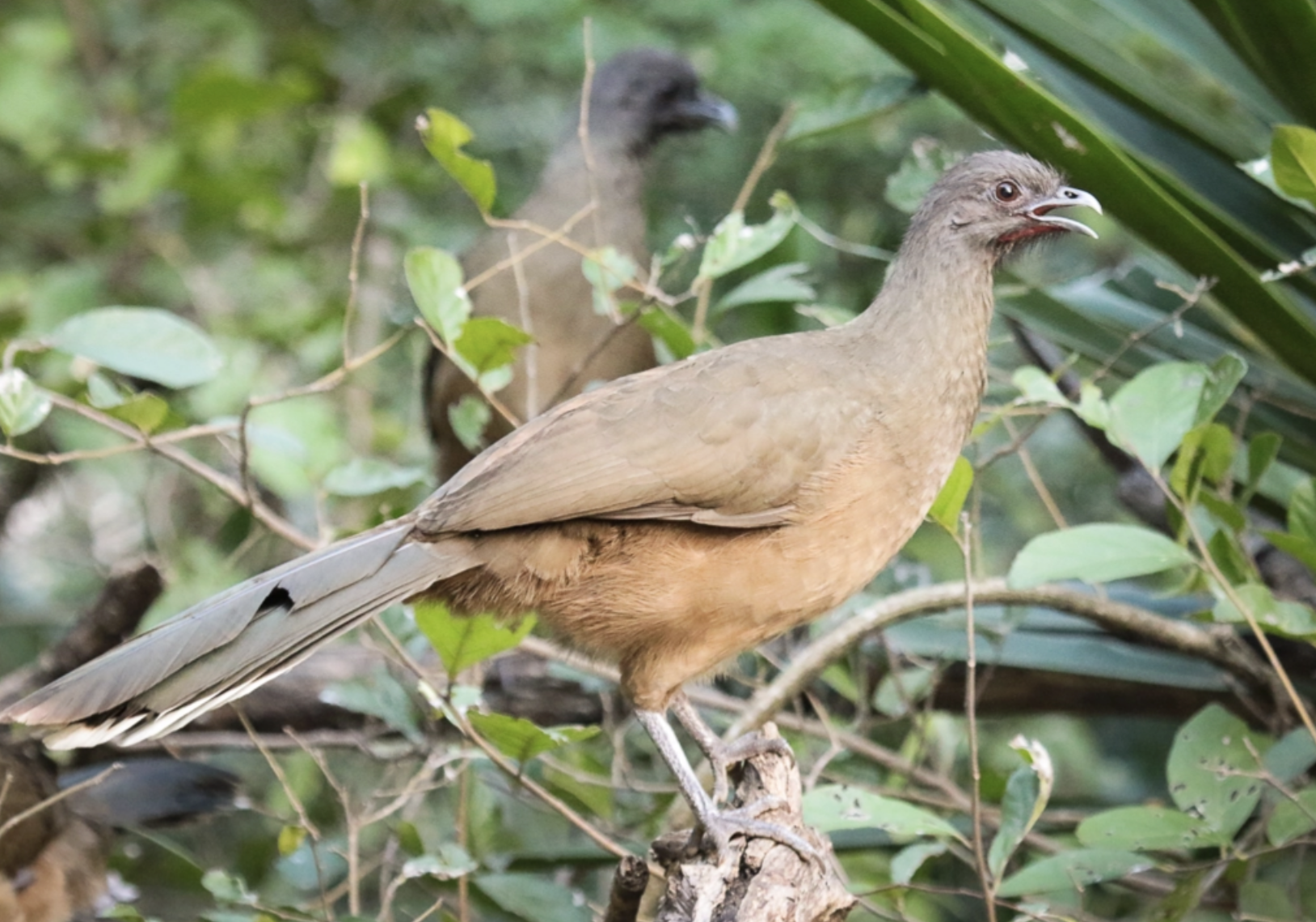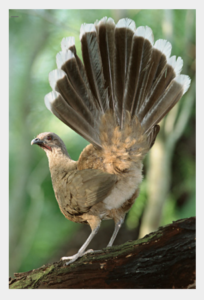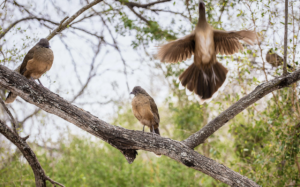Meet the Rowdiest Rooster You’ll Ever See — and Hear
Texas: land of wide-open spaces, ten-gallon hats, and critters that’ll make you double-take. You might be familiar with the majestic longhorn or the elusive mountain lion. We love our featured Texans and one that is stealing the show down south – the chachalaca or (Ortalis vetula) as the scientific types know them as.
This isn’t your average backyard chicken. The chachalaca is a firecracker of a bird with a personality as big as its voice. Imagine a cross between a pheasant and a roadrunner, with a coat of brownish-olive feathers and a tail that goes on for days. But their most notable trait is their call – a loud, raucous “cha-cha-lac” that echoes through the brush like nothing you’ve heard before.
These feathered mariachis aren’t shy about letting loose. They like to gather in rowdy family groups of up to 15 birds, belting out their signature tune at dawn and dusk. It’s a symphony of squawks and squawks, guaranteed to wake you up faster than a pot of coffee.
The Plain Chachalacas are native to southern Texas, Mexico, and Central America. These noisy birds thrive in dense thickets and forest edges, and they are often seen in scrubby woodlands and subtropical forests.
The Plain Chachalaca is furtive and wary. It prefers to escape danger by running swiftly on the ground or leaping and gliding through brushy tangles.
There’s more to the chachalaca than just their impressive vocal cords. These birds are an essential part of the South Texas ecosystem.
Here’s why you should give a hoot about the Plain chachalaca
- They’re the ultimate jungle gymnasts: Forget the Olympics. These feathered acrobats put on a daily show. They spend most of their time high up in the trees, zipping through the branches and climbing like monkeys on a sugar rush. Their long legs and strong claws make them a natural at navigating the thorny thickets of the South Texas brush.
- They’ve got a discerning palate: Chachalacas aren’t known to be picky eaters. They’re omnivores, which means they chow down on a smorgasbord of goodies – fruits, berries, seeds, insects, you name it. They’re like the cleanup crew of the forest, gobblin’ up bugs that might otherwise munch on our precious plants.
- They’re the ultimate Texas fashionistas: Okay, maybe not fashionistas traditionally, but their feathers serve an important purpose. The brownish-olive camouflage helps them blend in with the brush, protecting them from hungry predators like hawks and owls. Think of it like wearing your favorite camo overalls – perfect for disappearing into the wild.
- They’re the storytellers of the South Texas brush: The chachalaca’s call is a classic communication method. They use their calls to warn each other of danger, attract mates, and settle family squabbles (we’ve all been there, right?).
- They’re a symbol of a healthy ecosystem: The presence of chachalacas is a good sign for the health of South Texas brushlands. They need healthy forests with plenty of trees and shrubs to thrive. So, seeing a chachalaca scootin’ around is like a thumbs up from Mother Nature herself. You must be doing something right!
The chachalaca’s future isn’t all sunshine and bluebonnets. Habitat loss due to development is a significant threat. When their brushy homes get bulldozed, they lose the food and shelter they need to survive.
So, what can you do to help these rowdy roosters?
Support organizations that work to conserve South Texas brush habitat
Here are a couple to get you started:
- The Texas Parks and Wildlife Foundation: https://www.tpwf.org/
- The National Wildlife Federation: https://www.nwf.org/
Spread the word! The more people who know about the chachalaca, the better their chance of surviving and thriving.
It’s best to remember that taking care of our Texas Wildlife isn’t just good for our chachalaca friends; it’s good for us, too. A healthy ecosystem with various critters balances things and provides clean air, water, and a place to enjoy the great outdoors.
So, the next time you’re out and about in deep South Texas, keep your ears peeled for the raucous call of the chachalaca. It reminds us of the wild beauty surrounding us and a call to action to protect these feathered friends for generations to come.
Resources: https://tpwd.texas.gov/landwater/land/habitats/southtx_plain/upland_birds/chachalaca.phtml











